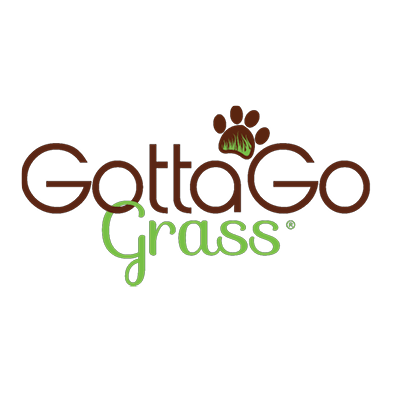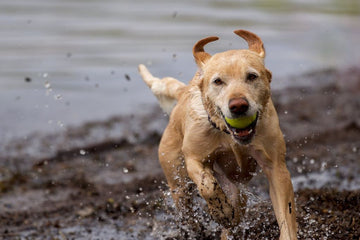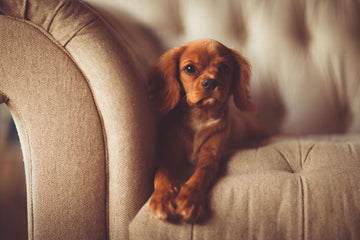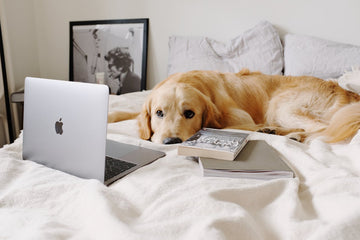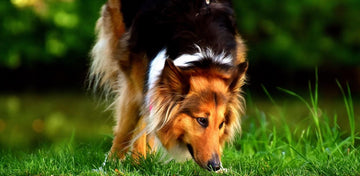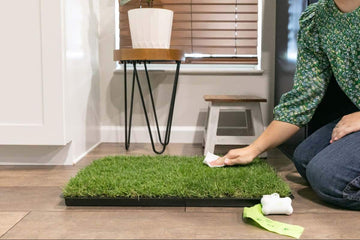
You walk through the door expecting excited tail wags—but instead, you’re hit with a wall of stink. You trace the smell back to your dog’s indoor potty spot. Whether it's a fake grass pad, real grass system, or a single-use pee pad, lingering odor can quickly take over your space.
So what’s the culprit? More often than not, synthetic potty systems made from plastic materials trap moisture and odor deep in their fibers. Add poor airflow or an infrequent cleaning schedule, and the result is a setup that smells faster than you can toss yesterday’s waste bag.
Real grass pads—like Gotta Go Grass®—offer a more natural solution, with their built-in moisture-absorbing and odor-fighting properties. But even they aren't immune to the occasional stink. Let’s break down why odor happens, how to fix it fast, and why switching to natural grass could be part of the long-term solution.
Why Your Dog’s Grass Pad Smells
Unpleasant smells from your dog’s potty area don’t just come out of nowhere. Understanding the root causes is the first step to addressing and preventing them.
Synthetic Pads Trap Odor Faster
Fake grass pads and disposable pee pads may seem convenient, but they can quickly become odor magnets. These systems don’t breathe. Moisture seeps in and stays trapped within the synthetic fibers or tray below, creating a warm, bacteria-friendly environment.
Unlike real grass—which absorbs liquid and neutralizes smells—plastic materials hold onto odors. Even after rinsing, smells can linger or return within a day or two.
Trapped Moisture Leads to Bacteria and Smell Buildup
Dog urine contains ammonia, which smells sharp on its own. As it breaks down and mixes with bacteria, that odor intensifies. If your pad isn’t cleaned or changed regularly, you’ll also get that sour, musty smell that clings to nearby surfaces.
It’s even worse if moisture pools underneath the synthetic grass, in the collecting tray, forming the perfect breeding ground for odor-causing bacteria or mold.
Real Grass Pads Can Still Smell—Here’s Why
Real grass pads like Gotta Go Grass stay fresher longer—but they still need a regular upkeep. If you haven’t replaced the grass pack recently or skipped cleaning the tray underneath, odor can creep in. It may not happen as quickly as with synthetic turf, but the smell is your cue: it’s time to swap out the pad or give the tray a good clean.

Common Cleaning Mistakes That Make Odor Worse
Even with the best setup, odor can quickly build up if cleaning isn't done thoroughly. Many pet parents assume a quick surface swap is enough—but odor often builds up in hidden places, like the tray, the underside of the grass, or even the surrounding floor. Understanding the most common cleaning oversights can help you prevent smells before they start.
-
Only replacing the top layer: If you're changing the grass but skipping the tray, the smell will come back fast.
-
Using harsh cleaners: Bleach or ammonia-based sprays can worsen the scent when mixed with dog urine—and may irritate your dog’s nose and paws.
-
Letting it stay damp: Bacteria thrive in moisture. Putting the pad back before it dries completely can create a cycle of odor.
-
Waiting too long to replace it: Synthetic turf wears down and becomes harder to clean over time. Real grass pads typically need replacing every 2–4 weeks.
How to Eliminate and Prevent Odors
1. Clean the Tray Regularly
For synthetic setups, deep cleaning is often required more frequently, as plastic materials tend to trap moisture and harbor bacteria. For real grass systems, it's best to clean the tray thoroughly each time you replace the grass pack. While real grass naturally helps control odor, the tray underneath can still collect residue over time.
Use a pet-safe enzymatic cleaner, rinse thoroughly, and allow all parts to dry completely before adding either synthetic turf or a fresh grass pad. Keeping the entire system clean is essential to maintaining a fresh-smelling potty area.
2. Let Everything Dry
After cleaning, allow trays and mats to air dry completely before putting them back together. This one step goes a long way in preventing bacterial growth.
3. Use Natural Deodorizers
-
Sprinkle baking soda in the tray between uses.
-
Place a small bowl of activated charcoal nearby to absorb odors naturally.
These safe, affordable methods can help keep the area smelling clean without harsh chemicals.
4. Improve Ventilation
Airflow is everything. Place your pad near a window or in a well-ventilated area. Stale air traps odors, while fresh air helps carry them away.
5. Switch to Real Grass
If odor is a persistent issue, consider upgrading your setup. Gotta Go Grass uses real farm-grown grass that naturally absorbs urine and helps reduce odor. It comes with a snap-together tray, making it easy to scale the potty area for larger dogs or multi-dog households. The durable tray is easy to clean and designed to work seamlessly with the real grass pads for a more practical, pet-friendly solution.
Real grass stays fresher longer and feels more natural for your dog. You’ll still need to clean the tray and replace the grass every few weeks. However, the difference in smell and cleanup is worth it.

When to Replace Your Grass Pad
Even natural solutions have a shelf life. Watch for the following signs that it’s time for a replacement:
-
Browning or wilting grass
-
Slow absorption
-
A lingering smell
-
Grass that stays constantly moist and no longer dries out
-
Your dog is avoiding or refusing to pee on it
Most real grass pads last 2–4 weeks, depending on your dog’s size and potty frequency. If the odor keeps coming back quickly or your dog no longer wants to use the pad, it might be time for a new grass.
Final Thoughts
The stink doesn’t have to stick around. Whether you’re using synthetic turf or real grass pads, odor is usually a sign that something needs cleaning, drying, or replacing. Real grass pads like Gotta Go Grass offer a longer-lasting, natural way to control smells, but even then, maintenance matters.
So stay on top of cleanup, keep airflow in mind, and switch to real grass if you’re tired of the plastic trap.

